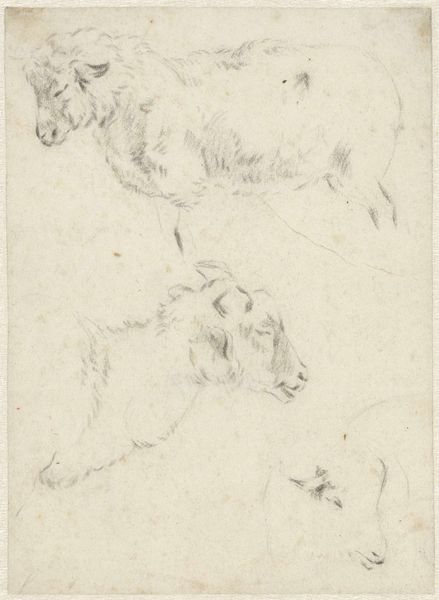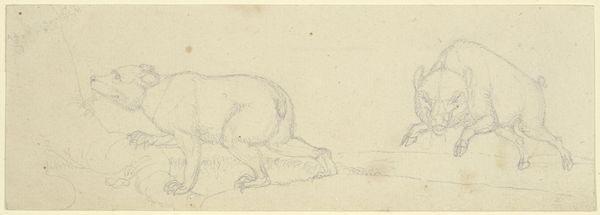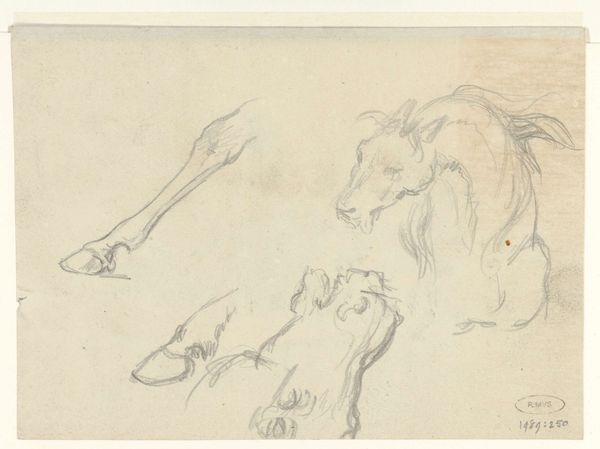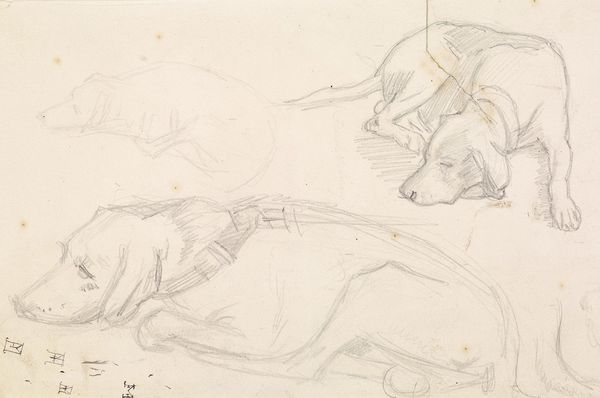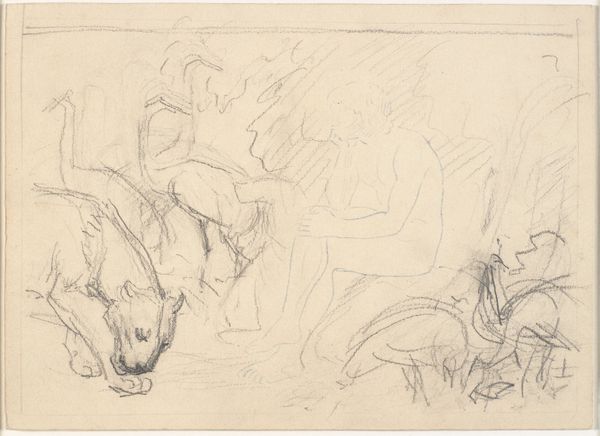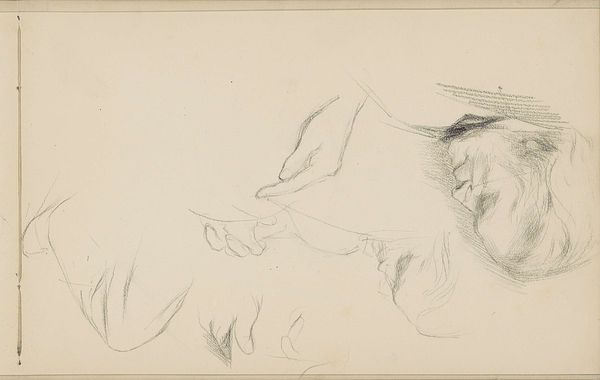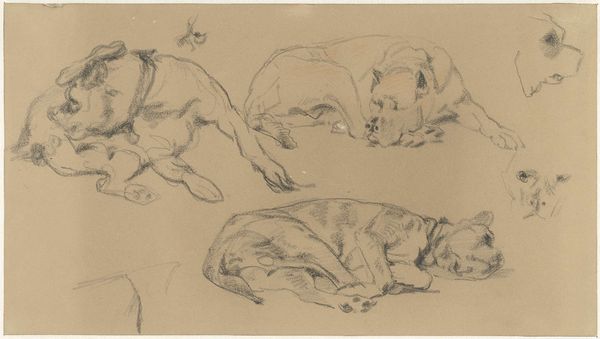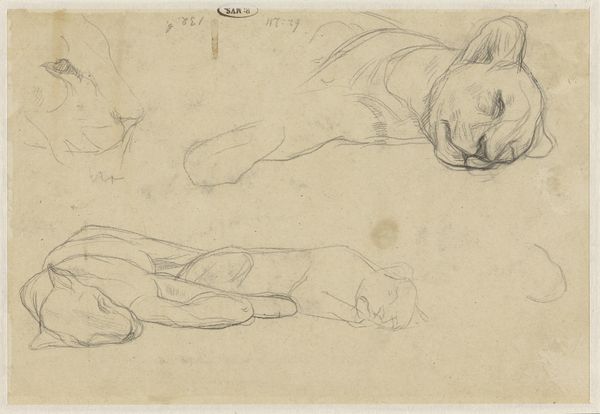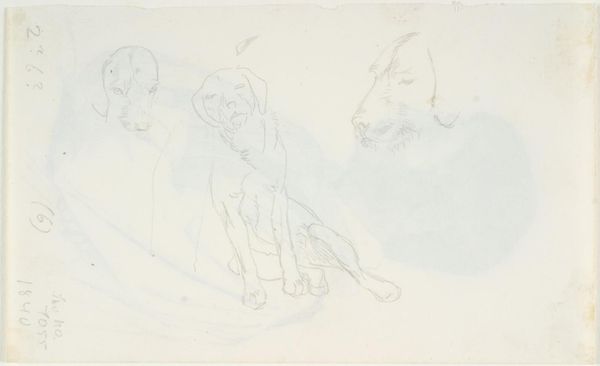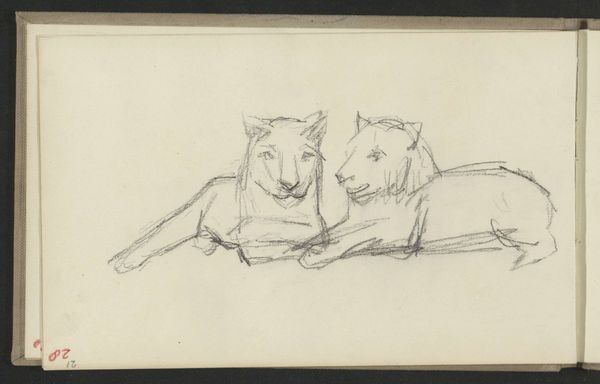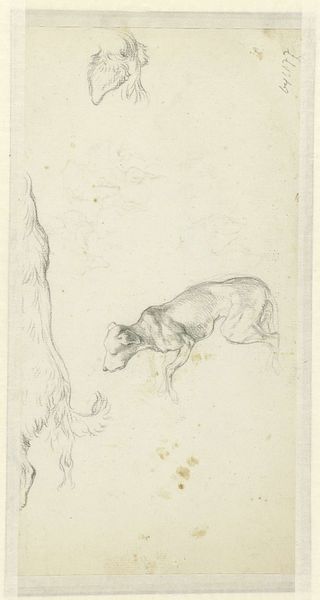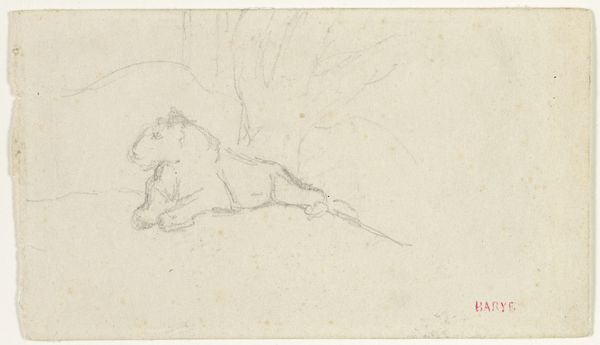
drawing, paper, dry-media, pencil
#
drawing
#
animal
#
pencil sketch
#
figuration
#
paper
#
dry-media
#
pencil
#
realism
Dimensions: height 310 mm, width 209 mm
Copyright: Rijks Museum: Open Domain
Curator: Jozef Israëls created these Studies van een Hond – Studies of a Dog – sometime between 1834 and 1911. It’s a pencil drawing on paper, currently residing here at the Rijksmuseum. Editor: Immediately, I feel a sense of intimacy. The fleeting quality of the sketch, that tender, searching line—it captures a sort of vulnerability, not just in the dog itself but also within the artist's hand. Almost like eavesdropping on a private moment of observation. Curator: Absolutely. Animal studies often act as windows into deeper, more primal aspects of human nature. Dogs, of course, are historically powerful symbols of loyalty, guardianship, and the wild spirit domesticated. Israëls, though, avoids romanticizing; instead, he distills the canine form to its raw essence. Notice how economical his marks are, yet how powerfully they suggest form and movement. Editor: It's interesting you mention movement. There's a lovely dynamism in that upper study—almost a premonition of Eadweard Muybridge’s motion studies decades later. It makes me consider all of the hidden layers buried beneath a deceptively plain surface. It gives me pause to notice these gentle graphite lines suggesting fur, muscle, bone. They bring me to the soul, perhaps. Curator: Indeed. Israëls worked within a Realist tradition that aimed to depict life authentically. But unlike Courbet’s confrontational realism, Israëls often sought a quiet, internal truth. The quick, almost impatient marks around the legs could imply impatience from the dog model, if it truly was a "real-life" encounter with one or more animals. This aligns with psychological ideas associating domestic animals with unvarnished instinct. Editor: Perhaps the impatience was on the artist's part, too, capturing a restless idea before it vanished. I wonder about the relationship between the artist and animal in those historical moments when animal companions started earning more visibility in painting. They weren’t merely accessories or symbols of wealth, as might be seen in grand portraits of previous eras, but, perhaps more simply, friends. It really adds another dimension to the composition. Curator: Food for thought. Considering how fraught symbolic relationships with dogs were during that era, his rendering feels both candid and considered. Thanks to its inherent simplicity, this seemingly simple sketch presents layered symbolic and creative reflections that keep enriching upon re-examination. Editor: You're so right. I can stare at it for another hour. This makes me contemplate the countless unsung sketches tucked away in museums, waiting to whisper their secrets.
Comments
No comments
Be the first to comment and join the conversation on the ultimate creative platform.
